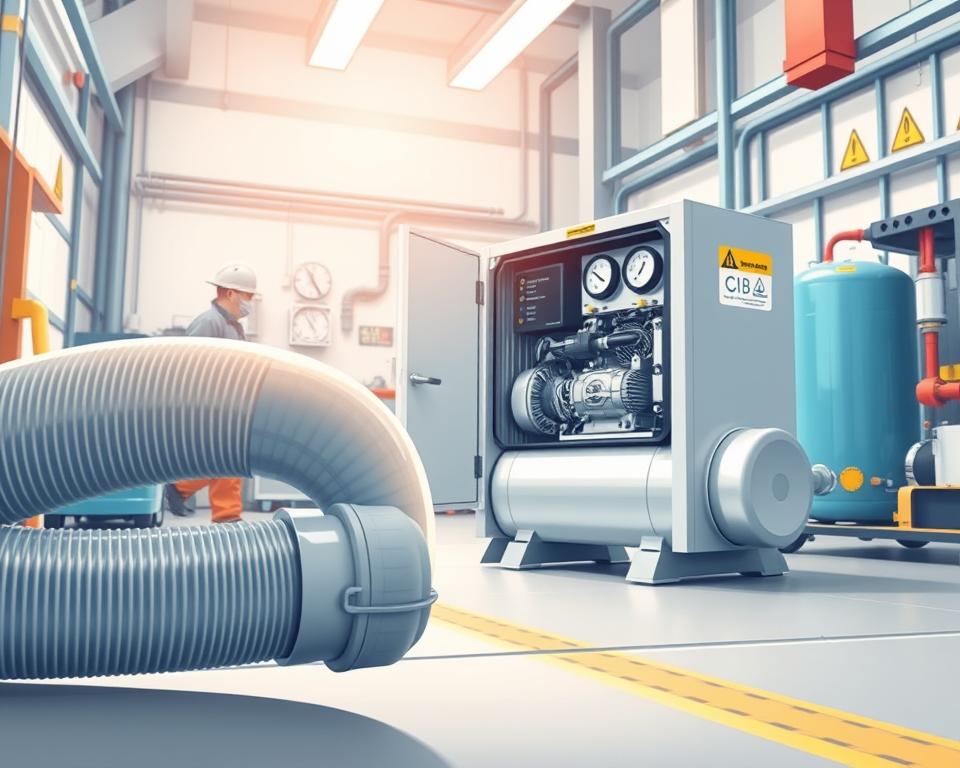Silicone Framework Sealant Guide for Builders
Are you aware that nearly 75% of construction experts rely on silicone structural adhesives for efficient waterproof construction? These high-performance sealants are not just a fad; they have become indispensable in contemporary construction projects for their outstanding durability and strength against weather elements.
Silicone framework sealants provide strong bonding and increased compatibility with a wide range of substances. This makes them the preferred choice for builders concentrated on durability and lower maintenance. Their effectiveness in various uses, particularly in framework connections and window sealing, shows how these construction sealants have a vital role in enhancing the functionality and security of buildings.
Introduction to Silicone Framework Adhesives
Silicone framework adhesives are a significant advancement in construction and building. They offer strong adhesion and elasticity, making them important in modern building design. In contrast to conventional sealants, silicone sealants feature enduring elasticity. This is crucial in regions prone to movement or expansion.
The creation of framework window adhesives has been a game-changer. These sealants are essential for various applications, both inside and exterior buildings. They ensure integrity in diverse construction ventures. With a background spanning decades, silicone sealant are now essential for security and aesthetics in architecture.
Constructors and designers trust silicone sealants for their performance and versatility. They are utilized in window sealing and sealing exterior connections, providing a dependable option for modern building. As we explore into the categories and characteristics of silicone sealants, it’s clear they have a vital function in building practices.
Varieties of Silicone Adhesives
For builders and developers, it’s important to comprehend the different categories of silicone adhesives. The main categories are neutral rubber adhesive and acid silicone sealant. Each category has distinct features that affect their use, making it essential to choose the right one for a venture.
Neutral Rubber Adhesive
Neutral silicone sealant is the preferred for delicate uses. It doesn’t emit chemicals that could trigger corrosion or harmful chemical reactions with different materials. This makes it perfect for structural glazing, particularly in joining glass. Constructors often choose this sealant for working with alloys and other sensitive materials.
Acid Rubber Adhesive
Acid silicone sealant is ideal for ventures with robust substances. It dries quickly, making it great for sealing gaps quickly. It’s used in both home and business settings where efficiency and strength matter. Developers appreciate its versatility, but caution is needed when applying it with substances that are sensitive to acids.
Important Attributes of Silicone Framework Adhesive
Silicone structural sealants excel in building due to their notable features. They boast strong bonding, robust weather resistance, and exceptional longevity. These attributes are essential for builders seeking a dependable adhesive for multiple uses.
Adhesion and Suitability
High-quality structural sealants adhere well to substrates like glass, alloys, and concrete. This versatility is important for ventures requiring a strong connection across different materials. Constructors appreciate this adhesive for its capacity to guarantee a solid bond, enhancing the building’s integrity.
Weatherproofing
Engineered to withstand severe conditions, weather-resistant rubber adhesive resists to ultraviolet light, humidity, and extreme temperatures. Such resilience ensures it continues to work well over time. It’s an ideal choice for projects subjected to the elements or those in areas with fluctuating conditions.
Durability and Performance
One of rubber adhesives’ key qualities is their longevity. They are designed to endure, even with building shifts. This elasticity and longevity make them a top choice for ventures requiring to adjust and endure, ensuring steady efficiency over their lifespan.
| Property | Explanation | Advantages |
|---|---|---|
| Bonding | High bonding strength to multiple materials | Guarantees structural cohesion and dependability |
| Weather Resistance | Defense from ultraviolet light, moisture, and weather fluctuations | Improves durability and avoids sealant breakdown |
| Longevity | Ability to withstand structural movement | Offers a long-lasting and efficient bond |
Uses for Rubber Sealant in Building
Silicone adhesives are essential in building, particularly in framework window sealing uses. They join architectural elements like windows, facades, and window systems, guaranteeing both durability and beauty. A top-quality rubber adhesive not only creates a strong bond but also moves with construction substances, maintaining the seal through natural shifts.
Silicone products are also key in creating weather-resistant barriers, enhancing structures’ durability against harsh weather. This is crucial for the longevity and security of structures. Here are some notable areas of application:
- Bonding dissimilar materials, such as glass to alloys or cement.
- Creating seals in curtain wall systems, improving energy performance.
- Providing waterproofing options for roofs and siding applications.
- Enabling expansion and contraction in dynamic structures.
- Guaranteeing aesthetic appearance consistency in various architectural styles.
The unique blend of elasticity, longevity, and weather resistance makes top-quality rubber adhesives perfect for modern construction needs. As builders search for innovative solutions, silicone adhesive is more utilized, leading more secure and better building methods.
| Use | Explanation | Benefits |
|---|---|---|
| Framework Window Sealing | Attaching glass panes to frameworks | Improved appearance, robust connection, flexible movement |
| Waterproofing | Sealing roofing and cladding from humidity | Water resistance, better durability, energy efficiency |
| Bonding Dissimilar Materials | Joining substances like metal and panes | Versatility in substance suitability, strong adhesion |
How to Select the Appropriate Rubber Framework Adhesive
Choosing the right rubber framework adhesive requires a thorough examination of substrate types and weather factors. It’s crucial to comprehend how different substances interact with various adhesives. This understanding is essential for selecting a top-quality rubber adhesive that can endure specific stresses.
Factors for Different Substrates
When selecting rubber adhesive, different substrates demand unique methods. Below is a chart outlining typical substrates and their related considerations:
| Substrate Material | Suggested Adhesive | Key Considerations |
|---|---|---|
| Concrete | Professional-grade silicone sealant | Adhesion properties and drying period |
| Glass | Non-reactive rubber adhesive | Clear finish and UV resistance |
| Alloys | Rubber adhesive | Rust protection and elasticity |
| Wood | Mixed rubber adhesive | Waterproofing and movement capability |
Environmental Conditions
The surroundings significantly influences the selection of sealing agent. Factors such as temperature extremes, humidity levels, and chemical contact are important. An perfect sealant should maintain performance across varying conditions.
- Temperature: Make sure the adhesive can withstand the specific temperature range.
- Humidity: Choose sealants impervious to moisture for wet areas.
- Chemical Contact: If the area will be subjected to chemicals, select a adhesive with appropriate protection.
For the optimal outcome, consistently refer to manufacturer specifications and conduct suitability checks with materials. This method minimizes danger and ensures longevity for all projects involving a silicone structural sealant.
Correct Installation Techniques
Mastering the skill of acid silicone sealant installation is essential for its effectiveness. The outcome hinges on the thoroughness of substrate cleaning and the techniques employed. These preliminary stages set the stage for a effective adhesive installation.
Surface Preparation
Substrate cleaning is the cornerstone of effective silicone structural sealant installation. It’s imperative that materials are thoroughly washed, dried, and free of any impurities. The important procedures for surface preparation are:
- Washing: Particles, grease, and residues must be removed. The selection of cleaner should suit the material type.
- Priming: A primer may be required, based on the adhesive and substrate, to strengthen bonding.
- Drying: Total dryness of the surface is essential before applying the adhesive, as humidity can weaken its performance.
Adhesive Techniques
Opting for the correct adhesive techniques is vital for superior results. The method used should match with the project’s needs and the desired result. Common methods include:
- Sealing Tool: This method is preferred for its precision in regulating sealant width.
- Spatula Use: Ideal for bigger areas or when a thick sealant layer is needed.
- Spacer Insertion: Crucial in deeper joints, this technique regulates sealant depth and improves adhesion.
Sticking to these application methods is vital to prevent bubble formation, which can reduce from the seal’s integrity. Diligence in both surface preparation and application guarantees a bond that is both long-lasting and effective, supporting the long-term success of construction endeavors.
Verification in Adhesive Application
Guaranteeing the standard of sealant usage is crucial for achieving efficiency goals. Efficient testing methods assist builders and developers check the integrity of their work. This involves thorough bond strength verification under different conditions to determine if the sealant sticks well with the surfaces it touches.
Testing for Adhesion
Testing bond strength is crucial for evaluating rubber adhesives. Techniques used involve:
- Pull-off tests – a typical technique to measure the bond strength between the adhesive and the substrate.
- Adhesion checks – useful for verifying how well the adhesive sticks over time.
- Field tests – real-world assessments that verify the sealant works as intended in actual conditions.
These techniques, included in the standard verification, build confidence in the adhesive’s bonding capacity and its suitability for a venture.
Recording and Guarantee Factors
Documentation is essential in ensuring adhesive standard. It involves noting the products utilized, how they were installed, and the conditions at the time of application. Thorough notes aid in later maintenance and protect all stakeholders. Warranty considerations are crucial, offering coverage against failures and outlining the duties of manufacturers and applicators. Adhering to standard documentation practices reduces risks from adhesives that don’t meet standards.
| Record Kind | Description |
|---|---|
| Application Notes | Information on the installation method, covering conditions and techniques employed. |
| Material Safety Data Sheets (MSDS) | Info on the safety and handling of sealants employed in the project. |
| Warranty Documents | Terms and conditions defining coverage against failures and failures. |
Maintaining precise info throughout the procedure is crucial for sealant quality assurance. Effective testing and detailed recording ensure strong warranty considerations, leading successful outcomes.
Frequent Errors to Prevent with Silicone Sealants
Many builders encounter problems with rubber adhesives that can severely affect their projects. It’s crucial to address these mistakes for a enduring and efficient bond. Here are some typical issues to be aware of:
- Incorrect Substrate Cleaning: Not cleaning and readying materials properly can result in poor bonding. Consistently eliminate particles, grease, or impurities before applying the adhesive.
- Selecting the Incorrect Adhesive: Various ventures require specific sealants. Employing an acid silicone in a situation where a neutral one is needed can result in subpar performance.
- Poor Application Techniques: Applying adhesive inconsistently can form weak spots. A steady hand and even pressure during use are essential for a strong bond.
- Overlooking Surrounding Factors: Sealants perform optimally within certain temperature and moisture conditions. Applying them in severe conditions can lower their efficiency.
- Overlooking Drying Periods: Hurrying the drying period can result in partial bonding. Always adhere to the suggested curing times for the best results.
Recognizing and addressing these rubber adhesive mistakes ensures improved efficiency and longevity in building ventures. Adopting these steps can lead successful installations and minimize the requirement for future repairs.
| Mistake | Impact | Solution |
|---|---|---|
| Incorrect Substrate Cleaning | Weak bonding leading to adhesive breakdown | Thoroughly clean and ready substrates prior to use |
| Choosing the Wrong Type of Sealant | Inadequate performance in particular conditions | Choose a sealant compatible with the application |
| Poor Application Techniques | Weak points in the seal, chance of breaks | Adopt consistent and uniform adhesive techniques |
| Ignoring Environmental Conditions | Compromised seal integrity | Verify temperature and moisture before use |
| Overlooking Drying Periods | Risk of premature breaches | Follow the suggested drying periods |
Maintenance of Rubber Framework Adhesives
Guaranteeing the longevity and efficiency of rubber framework adhesives is essential. Regular maintenance can prevent fungus development, fading, and seal failure. This preventive approach not only preserves the structure’s aesthetic appeal but also prolongs the sealant’s lifespan.
Key methods for effective upkeep include:
- Regular Inspections: Inspect for signs of wear, cracks, or swelling every few months.
- Hygiene: Maintain the region around the adhesives clean. Debris build-up can lead to fungus and fading.
- New Application: Prompt new usage is crucial when sealants indicate of degradation to preserve integrity.
- Environmental Considerations: Be aware of changing weather conditions and their impact on bond efficiency.
Implementing these measures can significantly lower potential problems, improving the structural integrity of buildings employing silicone-based materials. This commitment to upkeep guarantees a reliable and effective adhesive for structures.
Environmental Impact of Rubber Adhesives
The environmental impact of adhesives, especially silicone sealants, has experienced a increase in attention. This heightened focus originates from the requirement to match construction methods with sustainability. The production of these adhesives often involves chemical emissions, which contaminate the atmosphere and impact internal conditions.
As the construction sector moves towards sustainable materials, producers are creating in silicone sealants. They seek to lower VOC outputs and create green formulas. These innovations not only reduce on carbon emissions but also match with sustainable construction objectives.
Waste management of rubber adhesives presents ecological challenges. Unlike some other options, silicone is hard to reuse, resulting in more landfill waste. Consumers and constructors should look for products labeled as eco-friendly or supported by recycling initiatives.
| Factor | Conventional Silicone Sealants | Eco-Friendly Rubber Adhesives |
|---|---|---|
| Chemical Outputs | More pollutants | Reduced pollutants |
| Waste Management | Hard to reuse | Designed for easier recycling |
| Mixture | Standard chemical components | Eco-friendly chemical components |
| Adherence to Guidelines | Varies widely | Meets green building standards |
In the future, builders and designers should prefer rubber adhesives with lower ecological effects. Choosing these sustainable choices can greatly lower harm to our planet. At the same time, they still provide the durability and performance required in construction projects.
Comparing Rubber Adhesives to Other Sealants
Comprehending the variations between sealing agents and other sealant types is crucial for making educated decisions in building. This discussion will focus on two primary comparisons: silicone vs. acrylic sealants and silicone vs. polyurethane sealants. Each has unique roles in bonding uses, determined heavily by their properties and applications.
Rubber vs. Plastic Adhesives
Silicone sealants excel in flexibility and weatherproofing, making them perfect for uses exposed to severe environmental conditions. Plastic adhesives, while easier to paint and usually reduced in price, might not offer the same level of longevity over time. Key differences are:
- Weather Resistance: Silicone performs better in extreme temperatures and humidity.
- Flexibility: Silicone can expand and shrink with structural movements, while plastic is susceptible to cracking.
- Adhesion: Silicone bonds effectively to a range of materials, whereas plastic may have limitations.
Rubber vs. Synthetic Adhesives
In the contrast of rubber vs. synthetic adhesives, both offer excellent bonding. Synthetic adhesives might possess a better bond to many surfaces but often are lacking when subjected to extreme conditions. Significant points to consider are:
- Bonding Power: Polyurethane can bond extremely effectively on various materials.
- Weather Performance: Silicone tends to outperform polyurethane in intense environmental conditions.
- Use: Polyurethane usually requires more careful mixing and use than silicone.
Each type of adhesive has its strengths and disadvantages, determining their fit across various projects. Creating an educated decision depends on understanding these comparisons when selecting between silicone and alternative sealants.
Upcoming Developments in Silicone Sealant Development
The silicone sealant sector is witnessing significant shifts, propelled by the need for contemporary building solutions. Innovations in adhesive mixtures are improving durability while lowering ecological effects. This shift is propelled by increased understanding of eco-friendliness, resulting in the development of effective, green adhesives.
Self-healing sealants are a groundbreaking development in this area. These products can on their own repair minor damages, greatly prolonging their duration and reducing on replacements. This satisfies the growing demand for long-lasting building materials.
Constructors face the difficulty of dealing with temperature fluctuations. In answer, manufacturers are creating very elastic silicone formulations. These adhesives are designed to endure changing environmental factors without reducing effectiveness. They are ideal for various construction projects.
The industry is also leaning towards sustainable, efficiency-driven sealant solutions. Builders and architects now seek products that meet their requirements and promote green methods. This trend underscores the critical role of ongoing research and development in the sector.
- Self-healing capabilities
- Improved elasticity for temperature variations
- Reduced environmental impact
- Efficiency-focused mixtures
Summary and Final Thoughts on Rubber Framework Adhesive
Rubber framework adhesives are crucial in the building sector, providing numerous advantages that boost both functionality and longevity. They offer superior bonding characteristics and durable bonds, enhancing building longevity and strength against environmental challenges.
These sealants also show notable weatherproofing and versatility, making them suitable for a wide range of applications. By employing top-quality rubber adhesives, constructors not only promote sustainable practices but also guarantee their seals last for years, ensuring security and dependability.
As construction advances, the use of silicone sealants will likely result in more durable and energy-efficient options. Embracing these innovations will help builders deliver top-notch outcomes that meet modern construction needs while promoting green methods.



